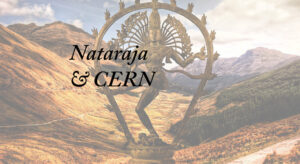Veda comes from the root Vid which means ‘knowledge’. Here it meant the highest knowledge or the secret knowledge that cannot be attained simply through the rational analysis of sensory data. Rik means to invoke or praise. Hence the Rigveda is composed in praise of and as hymns to invoke the various deities and forces that operate from behind and govern the cosmic order.
The Rigveda is the oldest document describing the revelations of the ancient Rishis. There are several of them, both men and women (Rishis and Rishikas). Some of these names include Atri, Agastya, Bhrigu, Kashyap, Bharadwaj ((men), Lopamudra, Ghosh (women). Later Rishi Ved Vyasa and his lineage compiled and brought them together dividing it into four sections, – Samhitas (the hymns of invocation proper), Brahmanas (interpretations), Aranyakas (rituals) and, the Upanishads (core knowledge).
The Rishis were mantradrsta who had ascended to higher states of consciousness due to which certain higher faculties of inspiration, intuition, revelation had opened in them and hence they could see the truths that is not accessible to our normal mental and sensory operations. These truths were expressed in a highest possible rhythmic intensity of speech called the mantra. The mantra embodies the vibrations that belong to the same plane that the Rishis had access to and hence could serve not only to reveal the truths intellectually but to unlock the inner doors so that others too could have access to similar experience. Since the revelation and the expression was not the result of an intellectual labour but of a direct Truth-vision and Truth-hearing the composition of the Vedas is often refered to as apaurusheya (without labour, effortlessly) that some interpret as ‘written by nobody’ or ‘given by the Creator’ (Brahma). What it means is that the Rishis had purified themselves sufficiently enough through their tapasya to open to and receive the inspiration directly from the highest realms of knowledge.
They are written in ancient Sanskrit which is different from the later modified derivative Sanskrit. It is much more plastic and can contain several layers of meanings together which include physical, psychological, occult and the spiritual. You can read more about it in Sri Aurobindo’s Secret of the Vedas.
Affectionately,
Alok Da



